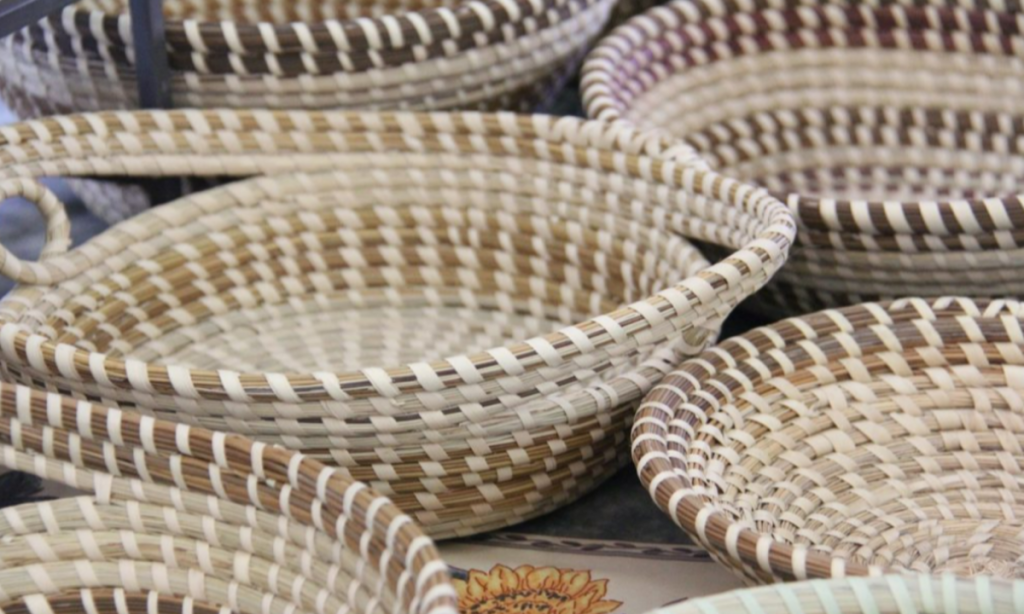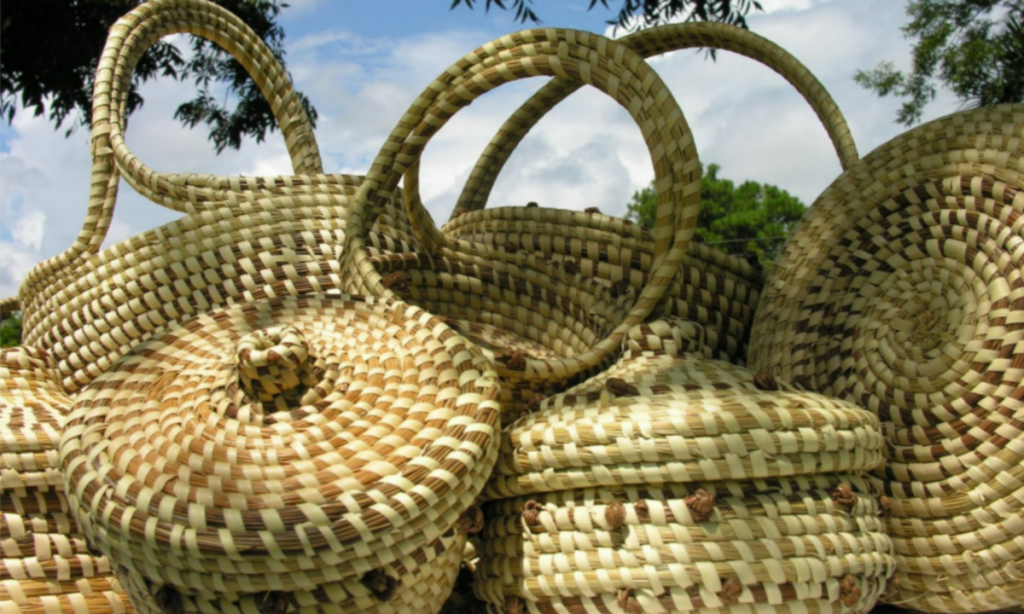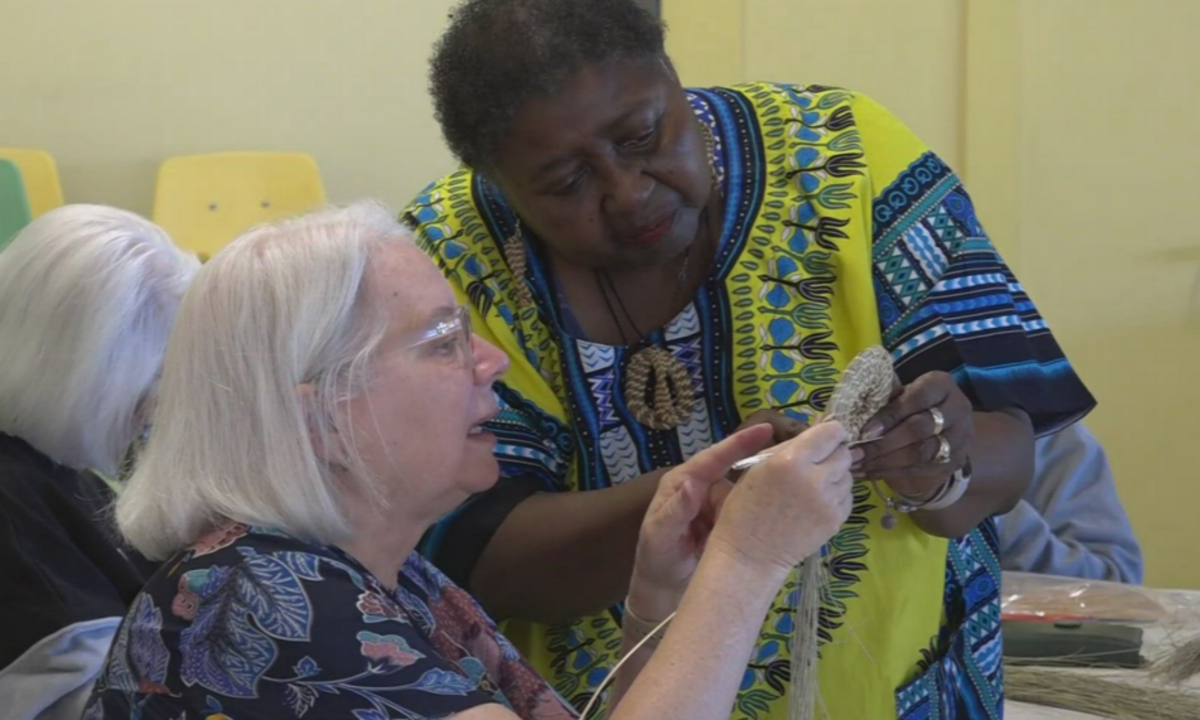Preserving Gullah Heritage: South Carolina’s Sweetgrass Basket Weaving Faces New Challenges
Sweetgrass basket weaving is one of South Carolina’s most treasured traditions, deeply rooted in Gullah culture. This unique craft, introduced to the region by West African slaves in the 1700s, has been passed down through generations. However, rapid land development and loss of natural resources have put this centuries-old practice at risk.
To celebrate and preserve this heritage, the Riverbanks Botanical Garden in West Columbia recently hosted a sweetgrass basket-making workshop. The event, which coincided with the start of Black History Month, provided participants with a hands-on learning experience, teaching them the history and techniques of this endangered craft.
A Tradition That Connects the Past to the Present
The Gullah people, descendants of enslaved Africans in the Lowcountry regions of South Carolina and Georgia, have preserved many African traditions, including basket weaving. Sweetgrass baskets were originally used for agricultural purposes, particularly for carrying rice and produce harvested from plantations.
While modern artisans now create decorative pieces, the process remains deeply traditional. Master basket maker Mary Graham-Grant, who led the Riverbanks workshop, explained that the technique is called “sewing” rather than weaving. This is because the strands of sweetgrass are bound together with palmetto leaves, pine needles, and bulrush, using a tool known as a “nail bone”—a modified spoon or fork used to pierce holes in the sweetgrass.
Graham-Grant has been making sweetgrass baskets for over three decades. She was inspired to learn the craft in 1990 after discovering its African roots at a festival. “I realized it was an African American art form, and that made me want to be a part of it. It’s a connection to our ancestors,” she said.
Men and Women’s Roles in Basket Weaving
Historically, both men and women participated in sweetgrass basketry, but their roles were distinct. Men typically made large, sturdy baskets out of bulrush to help with harvesting crops, while women focused on making smaller, more intricate baskets for domestic use, such as storing bread or sewing materials.
Today, artisans continue to create a variety of pieces, including baskets, earrings, necklaces, and bracelets, proving that this traditional craft can also be adapted into modern designs.
Threats to the Sweetgrass Basket Tradition
Despite its cultural importance, sweetgrass basketry faces an uncertain future. One of the biggest challenges is urban development in the Lowcountry. As cities expand, the natural habitats where sweetgrass grows are disappearing. Artisans struggle to find enough material, with most of it now growing in limited areas such as Mount Pleasant and Charleston.
“The development in this region is making it harder to find sweetgrass,” Graham-Grant said. “If we don’t take steps to protect it, this tradition could vanish.”
Organizations and communities are working to preserve sweetgrass habitats by advocating for conservation programs. Additionally, workshops like the one at Riverbanks Botanical Garden help raise awareness about the importance of keeping this tradition alive.
Community Engagement and Future Initiatives
The Riverbanks Botanical Garden hosts various workshops throughout the year to engage the community in different cultural and environmental topics. Rachael Bashor, Vice President of Mission Engagement at Riverbanks Zoo and Garden, emphasized the importance of these events.
“We want to provide opportunities for people of all ages to learn about different crafts, cultures, and histories,” she said. “Workshops like this one help us highlight the importance of preserving both horticultural and cultural traditions.”
Riverbanks also partners with the Richland County Library System and local school districts to provide free learning opportunities for children and families. This ensures that young generations can connect with history and develop an appreciation for traditional crafts.
Why Preserving Sweetgrass Basketry Matters
Sweetgrass basket weaving is more than just an art form—it is a living piece of history that represents resilience, heritage, and cultural pride. As urbanization threatens its survival, it is crucial to support artisans, conserve natural resources, and educate future generations about this unique craft.
By hosting events, promoting conservation, and encouraging younger generations to participate, the community can help ensure that sweetgrass basket weaving remains a thriving tradition for years to come.
Disclaimer—Our team has checked this article to ensure its accuracy and eliminate any misinformation. We are committed to providing clear and reliable information for our readers.


